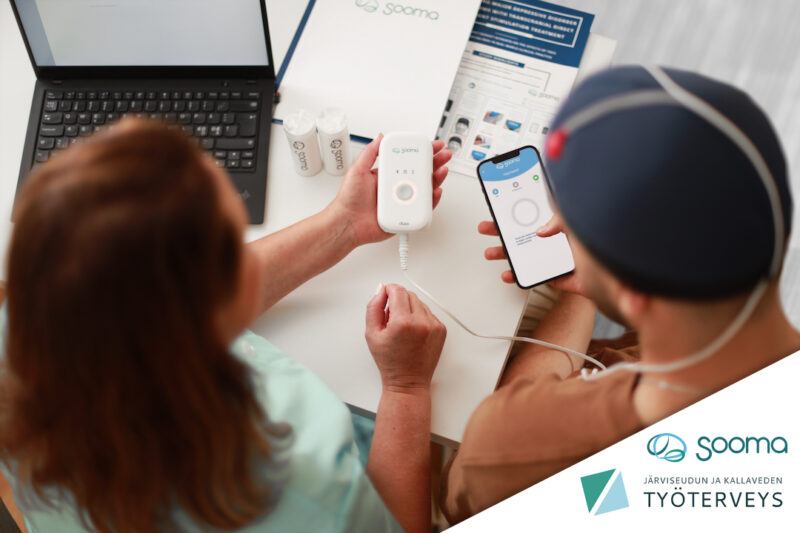Trial of Escitalopram versus tDCS for Depression
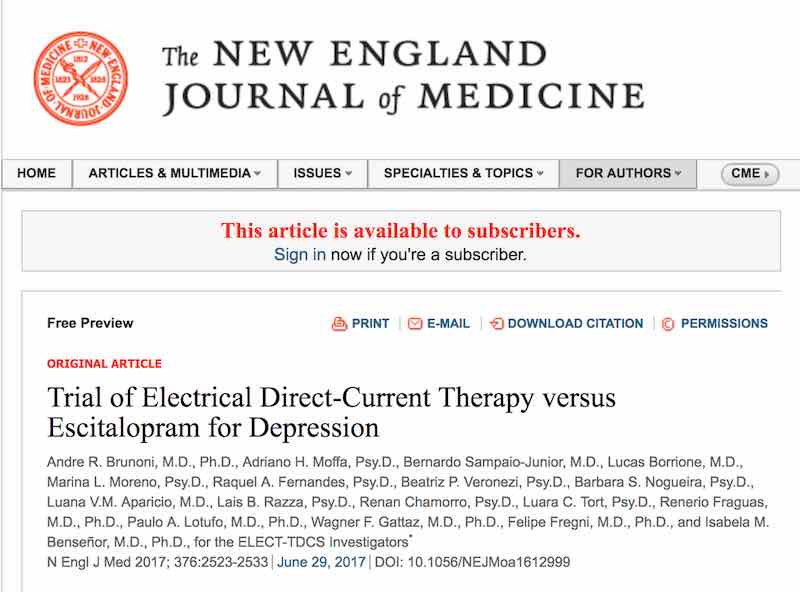
22.11.2017
Many of us who follow the science of electrical stimulation had high expectations when, in June, New England Journal of Medicine published the results of a big RCT by Brunoni et al. I know I did. It was the biggest study to date about tDCS in depression treatment. Moreover, the prior work by the same group had been really promising.
Brimmed with enthusiasm, you opened the publication and took a sneak-peek to the conclusion:
“In a single-center trial, tDCS for the treatment of depression did not show noninferiority to escitalopram over a 10-week period and was associated with more adverse events.”
In this blog post, I will look what did we learn from these 245 patients?

Figure 2: Summary of what follows
Ok, so let’s dive in starting from the conclusion. The authors could not confirm their primary aim that their chosen tDCS protocol is as effective as 20mg of escitalopram in depression treatment. However, there was a significant secondary outcome: tDCS was found to be superior to placebo.
Then, this study further confirmed the efficacy of tDCS in depression treatment. SP Tomlinson et al. summarized the result in their clinical opinion paper published in September:
Further, they advised caution when judging the failure to show non-inferiority to escitalopram. The study team noted that patients were able to guess their group allocation with escitalopram, but not with tDCS. In other words, the placebo control with escitalopram was not reliable. This is important because the uncertainty as to whether the patient is receiving an active intervention may negatively impact response and remission rates. In this case, the negative effect from uncertainty might’ve only affected the tDCS group.
tDCS protocol used in the study consisted of 22 half-hour sessions with 2 mA current. The sessions were administered five times a week for first three weeks, after which weekly sessions were given until week 10. Treatment outcomes for tDCS group at week 10:
HDRS-17 response: tDCS 41% – 22% Placebo
HDRS-17 remission: tDCS 24% – 13% Placebo
MADRS response: tDCS 40% – 23% Placebo
MADRS remission: tDCS 32% – 20% Placebo
Adverse events
The most surprising result of the study was the conclusion that tDCS was associated with more adverse events than escitalopram. Traditionally, tDCS is considered to have a favourable side effect profile as highlighted by the safety review by Bikson et al. in 2016.
This is also in contrast to our patient data, where treatment tolerability has been excellent and drop out rates low. When interviewed, many of our patients have also underlined the tolerability of the treatment when compared to their previous experiences with medication.
We looked into the supplementary materials of the study for more information on reported adverse events. The study used 2 questionnaires for adverse events: SAFTEE and a questionnaire focused on common tDCS side effects. Figure 3 lists the items included in both questionnaires.

Figure 3: Items included in adverse event questionnaires. Note how the questionnaires overlap: discomfort and headache are part of both.
Predictably, adverse events were more common with escitalopram in SAFTEE and with tDCS in stimulation focused questionnaire. When answers from both questionnaires were put together, there were no significant between-group differences as can be seen from Figure 4:

Figure 4: Prevalence of adverse events in the study groups. 36% to 43% of patients reported at least one adverse event that they classified as severe.
Looking at the adverse events data from supplementary materials revealed the most common side-effects:
- 96 out of 202 patients reported at least mild improvement in mood
- 61 reported at least a mild headache
- 57 reported at least mild itching
- 56 reported at least mild sleepiness
In the adverse effects classified as severe, the only significant between-group difference was in Sleepiness: Severe sleepiness was more frequently associated with escitalopram than tDCS or placebo. Largely owing to this, there was also a between-group difference in severe adverse effects per patient as shown in Figure 5.

The most common adverse effects per group



The difference disappears when we consider adverse events from all severities, which is also noted by the authors: “There were no significant differences among the groups in the overall frequency and intensity of adverse events.” However, there are side effects that are clearly more associated with one group. Figure 6 illustrates the side effects, where a statistical difference between escitalopram- and tDCS-groups were found.

Figure 6: Side effects, where statistical significance between escitalopram and tDCS was found. Itching, Burning and redness were more associated with tDCS whereas sedation, diarrhea and decreased libido were more prevalent with escitalopram.
The side-effect profiles are clearly different. As such, it could be reasonable to offer tDCS as an option for patients who cannot tolerate the medication and vice versa.
Notably, there was two new onsets mania in tDCS group. The episodes did not result in discontinuation or specific treatment.
Conclusion
The study has provided us with further evidence of tDCS efficacy in depression treatment. Further, it has shown that longer treatment protocols are feasible and well tolerated.
Bottom line in clinical work is, however, that you do not have to choose between these treatment methods: They are both superior to placebo. Medication will be effective for some patients and tDCS will be effective for others. Moreover, there is no need to stop the medication when starting tDCS. The study did not place much emphasis on what the patient does during the treatment session. This is understandable when the aim is to isolate the efficacy of the intervention. I wonder, could you use the time more effectively?
Latest news
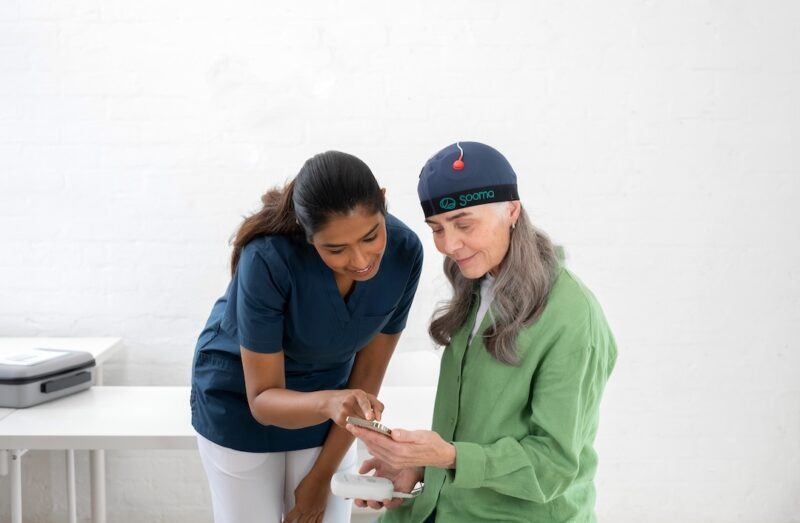
TGA approves Sooma’s at-home brain stimulation for depression in Australia
Read more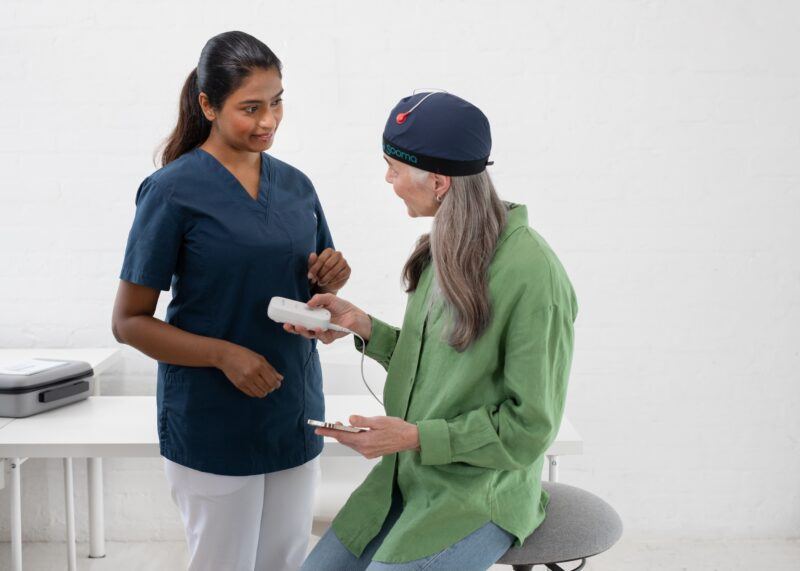
Sooma Medical Announces Pivotal FDA IDE Clinical Trial for At-Home Brain Stimulation Device for Depression Treatment
Read more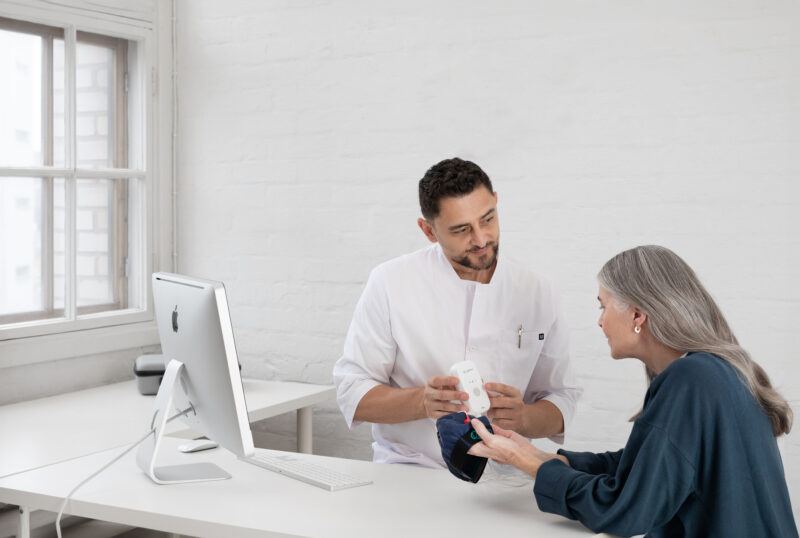
Sooma Pioneers the Integration of Brain Stimulation into Primary Care, Improving Access to Early-Stage Depression Treatment
Read more